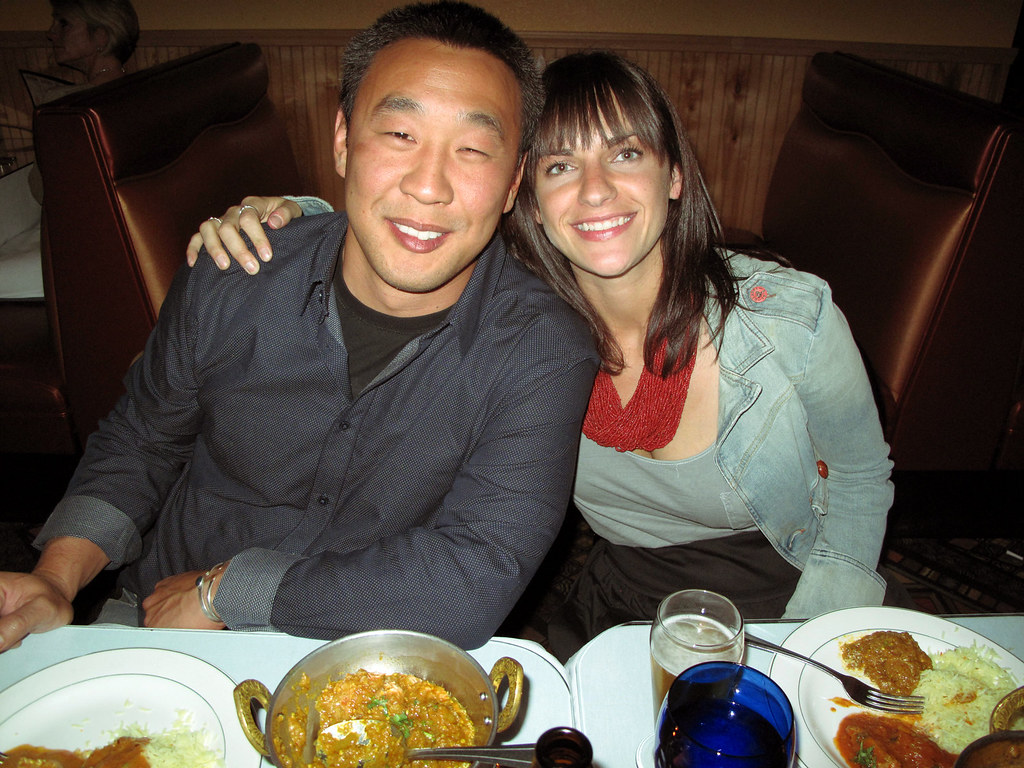In Babs Laukat's BFA show, "Lustre Noir," the space was arranged around a series of inversions. Shapes squatting in a corner were echoed by shapes dangling from the ceiling, live flowers were set against a frame of artificial flowers, liquid water dripped and spattered against hard shards of glass. It was as if a set of conversions were being worked out: a sense of movement among the pieces made the images seem transactional, rather than static and resolved. A large chandelier (which, draped with tattered fabric, looked as much like a squid as a chandelier) held globes of ice, in which roses were frozen. As the ice melted, water dripped into a basin of shattered glass, which in turn sent fractured, melting shadows across the walls. A looped video projected onto the wall seemed at times to absorb these shadows and congeal them into more definite forms. Watching the video, you might gradually become aware that behind you, on a set of ascending shelves, orchids in glass containers were slowly growing, regardless of your attention. There was a subtle but consistent activity of dissolution, decay, growth, reconstitution.






In her talk, Babs explained her fascination with dualities, especially as they're worked out along the gender divide. She said she felt the present arrangement of dualities causes neurosis, and some of the seeds of her work were planted in a class on transpersonal psychology. In the work itself, Freud seemed to loom larger than Jung. An empty black dress, ruffled along a stark metal scaffolding, was parted to reveal a vacancy whose floor was covered in a thin layer of dirt. The humid chandelier patiently secreted its contents into the mirrored basin (the next morning, the collecting pool was faintly pink, suspending a solution of leached rose petal).

The opposition of gender stereotypes was "resolved" by a nearly life-size image of transsexual fashionplate (and David LaChapelle muse)
Amanda Lepore, scaled and lit like an official portrait of a president, CEO or dictator (and actually, that scale might be too small for LePore, whose lips call out for billboard-sized framing). She stared out of the portrait like a surveyor of the work. The picture was cut off at the knees, but two arched shoes were set out in front of it, cobbled from welded steel.





The video, pieced together with public domain clips from the Prelinger Archive, dissolved stereotypically gendered images on top of one another. There is a cowboy riding a horse along a a plain, flowers that bloom in accelerated time lapse, a toothy female smile that stutters in an insistent loop, a mushroom cloud slowly raising its cephalopod dome, a quaint stripper who swings in and out of her disclosures between two luxuriant feather fans. Presented as a list, the images sound overdetermined -- and it would seem the switchbacks could only function as camp. But rather than editing from one image to the other, Babs superimposed them. Instead of being aware of cultural oppositions, you see connections being forged between them, in largely formal terms. A motion or a texture jumps from one image to the next, as they share a moment of time and interpenetrated space. The stamping of the horse's hooves seems to cause the flowers to burst open. The stripper emerges, diaphanous, from the convulsed clouds of a nuclear detonation, debris and dust shivering into fluttering feathers.




The work struck me as being strangely utopian. There was something gloomy about the space she created -- something dim and subterranean. At first glance, nothing seems to be truly resolved. Babs mentioned a desire to "solve the differences" that she sees in our cultural divides. But her synthesis seemed to rest on an embrace of artificiality, the way Amanda Lepore wears her femininity as an image, rather than a destiny.
Beyond that, however, the natural materials and processes evoked something more fundamental. The room had the kind of tenderness sleep can contain, when you're really craving it. I imagined Babs cultivating and caring for her images in the way she cultivated and cared for her orchids.


























































